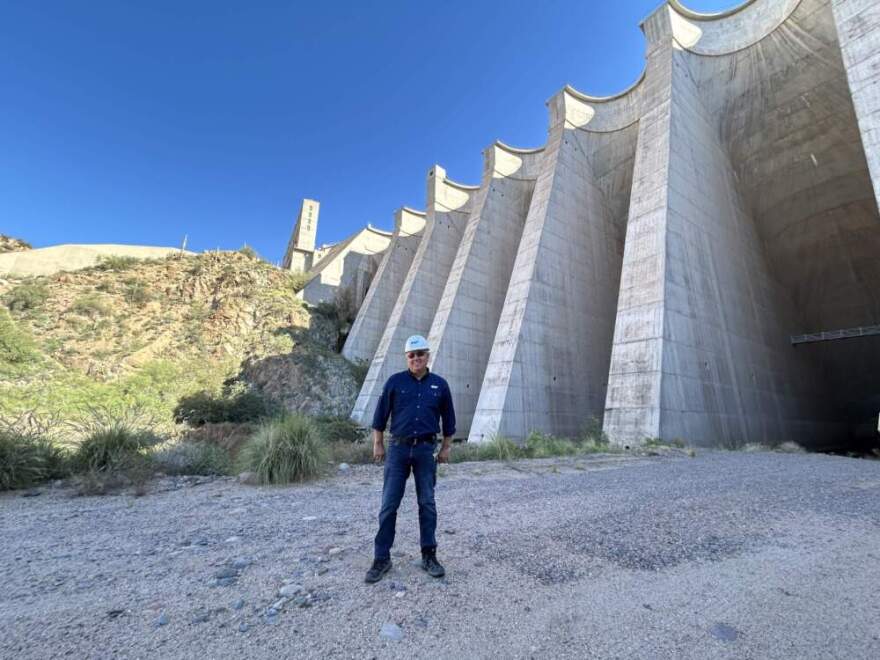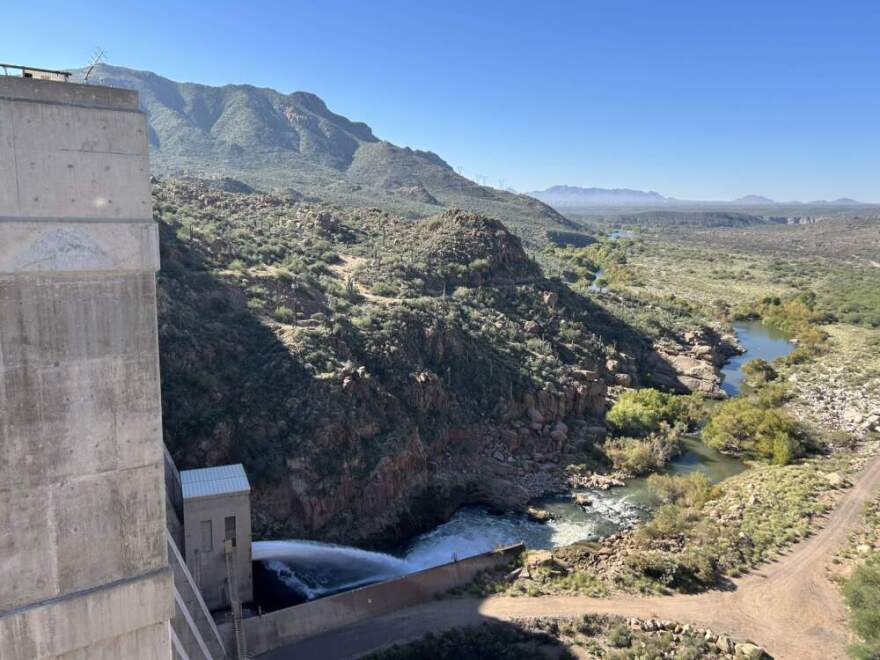Don McMillan oversees the Bartlett Dam on the Verde River, about an hour outside of Phoenix, Arizona. He works as a dam keeper for the Salt River Project, a utility that provides water to more than 2.5 million people. On a recent day, 1,100 gallons of water gushed from the base of the dam per second, heading toward customers downstream.
“ A lot of people ask me what I do here. The simple answer is, my job is to make sure this big piece of concrete doesn’t go anywhere,” McMillan said. “Every day I walk through this dam, I walk through the top of the dam, I walk through the bottom of the dam, I put my eyes on the structure. I’m just looking for any changes, any variance from the day before, the week before.”

Western rivers, reservoirs and dams like the Bartlett Dam provide water to tens of millions of people living in the Western United States, but climate change and overuse are putting stress on those systems.
One example is the dwindling water supply on the Colorado River. The seven states that rely on it for water missed a Tuesday deadline to come up with a plan to share the water in times of drought. The federal government may have to step in now, forcing the states to cut back on water use.
The Bartlett Dam is a vital link in a chain of water infrastructure. But rising summer temperatures, growing cities that require more water, and a two-decade-long megadrought have put stress on that water system.
“ We live in the desert,” McMillan said. “We only have a few lakes in all of Arizona.”
And supplying water to those who need it is crucial, McMillan said, but so is keeping the river healthy, and the dam helps do that.

“We have to supply paying customers downstream. But we also want to keep this river alive,” McMillan said. “We want to save the flora, the fauna, the trees and the fish. Without this being here, the river would die.”
Construction on the Bartlett Dam finished in 1939, and the dam has accumulated nearly a century of mud and debris piled behind it. A federal process is underway to figure out the best way to fix the problem, and the Salt River Project wants to build an entirely new dam.
“All those cities down there, they continue to grow,” McMillan said, “but our lake holds less water because of the sediment.”
The lake is currently only half full. McMillan said this is the driest season he’s experienced since taking the job eight years ago.
“We are in the hands of the gods when it comes to the lakes and the rain,” McMillan said. “We really, really hope we get a really high snowfall in the mountains, because that’s where most of our water comes from in the springtime.”
McMillan lives in a company house next to the dam. His proximity is important — he can be at the dam within seconds in an emergency. He cites trespassers and turbine failures that kill all the dam’s power as potential issues he’d have to deal with.
He said a series of spill gates is the most critical part of the water system. Every month, he verifies that the gates are still working. If the reservoir ever gets too full, the gates stop it from overflowing.
When McMillan first moved to Arizona from Scotland, he said it was an adjustment from the “wet country” he was used to.
“ The first couple of summers, it was a bit of a shock to me to see how much harder it was to manage these lakes and keep the water in them,” he said.
But he said he likes the life he’s carved out in the peaceful desert. He said it’s quiet where he lives, and he doesn’t have to deal with the traffic and congestion of more populated places. Plus, he can see the stars clearly at night.
“ My companions are the desert critters,” McMillan said. “I feel blessed to be able to do this.”
____
Peter O’Dowd produced and edited this interview for broadcast with Catherine Welch. Grace Griffin produced it for the web.
This article was originally published on WBUR.org.
Copyright 2025 WBUR

